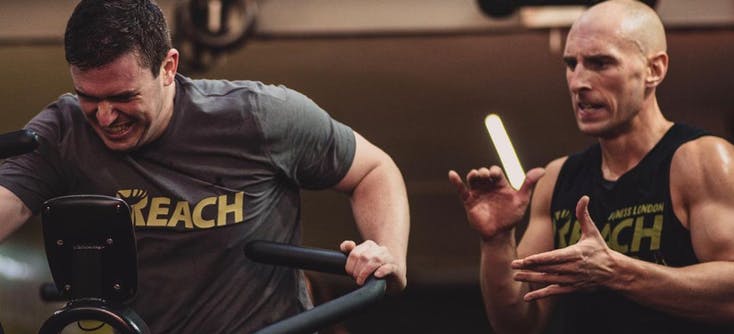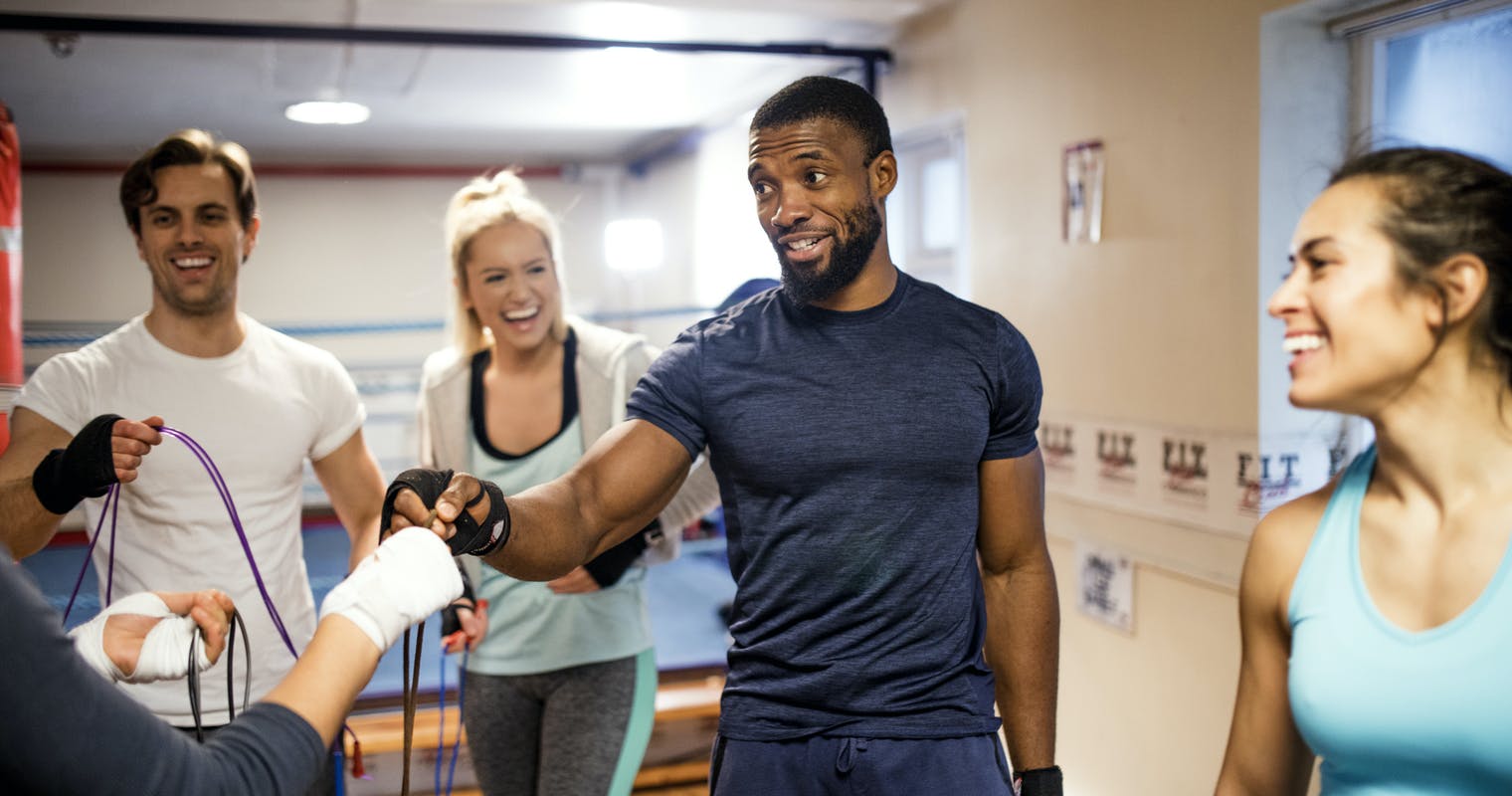Becoming a yoga instructor is a great way to help people improve their health and well-being. If you're interested in taking your yoga journey to the next stage, there are some important steps you need to take. In this blog post, we'll outline what you need to do to become a yoga instructor and start your own dream yoga studio.
-png.png)
Frequently asked questions from potential yoga instructors
Before we get into the steps you need to take to start leading yoga classes, let's first look at some frequently asked questions from people looking to become yoga instructors.
What do you do as a yoga instructor?
Leading yoga classes is more than just guiding people through various flows and positions. It's pretty typical to see guided meditation and relaxation included in yoga classes as well. As a yoga instructor, your goal is to create an environment where people feel comfortable, focus on their practice, and enjoy the benefits of yoga.
You'll also be responsible for planning each class, ensuring that it meets the needs of your students. This includes tailoring the sequencing of flows and positions to the level of your students, as well as incorporating modifications to accommodate different students' needs.
How long does it take to teach yoga?
How long it takes for yoga instructors to become fully qualified depends on the course you take. Some courses offer full immersion courses that can take from 14 to 30 days to complete, while a yoga teacher training school or college can take between three months and a year to complete.
What's the average salary for a yoga instructor?
For yoga teachers starting out leading yoga classes as an employee rather than as yoga studio owners, the average hourly wage in the USA is $32.93 per hour, and in the UK, the average starting hourly wage is £24.00 per hour.
-png.png)
Yoga teacher checklist
When yoga studio owners are hiring new yoga teachers, there are certain things that they would expect a qualified yoga teacher to have in order to safely lead yoga classes.
- Certification from a registered yoga teacher training school.
- A CPR or First Aid qualification.
- A good understanding of various yoga styles and meditation techniques.
- Good communication skills.
- A strong commitment to promoting physical fitness and a healthy lifestyle.
Gaining a yoga teacher certification can be achieved with commitment, but there are skills that can be learned along the way, such as how to build rapport with the clients at the yoga studio you work at.
How to get certified as a yoga teacher
Getting certified as a yoga instructor is the first step to leading your first yoga class. But what exactly do you need to do to get certified?
1. Learn yoga
It may seem a little obvious, but if you're hoping to embark on a yoga teacher training course, you need to know how to do yoga first. With so many types of yoga, it is also worth exploring the different yoga practices and looking into the philosophy of different yoga styles.
From Vinyasa Yoga to hot yoga, giving yourself a broad overview of the different types of yoga available will give you more insight as you take your yoga instructor certification.
2. Choose the right course for you
Don't just jump on to the first yoga teacher training program you find. Take your time to explore their methodology. Reach out to different schools and colleges to get any questions you have answered and make sure you find the right yoga teacher program for you.
Yoga teacher training programs commonly vary in length. 200-hour courses and 500-hour courses are the standard course lengths. Typically, a 200-hour course will take between three and five months to complete while the 500-hour can take between six months and a year to complete.
The Yoga Alliance is a great place to start your research as they have a list of over 8,000 registered yoga schools worldwide that offer teacher training.
3. Start your course and immerse yourself in yoga
This is it, the moment you've been waiting for! It's time to begin your yoga teacher training course. During your training, you'll learn how to lead a class, how to sequence flows and positions, and how to modify poses for different students.
You'll also learn about the history of yoga, different types of meditation, and how to develop a personal yoga practice. It's important to remember that becoming a yoga teacher is not just about acquiring the skills to lead a class but also about developing your own personal practice.
-png.png)
4. Become a Registered Yoga Teacher
Upon successful completion of the course, you will be registered with the Yoga Alliance as a Registered Yoga Teacher (RYT). Once you've completed a 200-hour or 500-hour course, you are a certified yoga teacher which for most yoga studios is all you need to teach yoga.
However, obtaining Registered Yoga Teacher (RYT) status means going to one of the Yoga Alliance's registered yoga schools (RYS). Not having an RYT doesn't stop you from getting work at yoga studios, but there are a number of benefits to having RYT status.
As well as giving you credibility and helping you to stand out to a yoga studio owner, you'll also have the advantage of the membership benefits, such as:
- Internationally recognised proof that you are qualified to teach safe, accessible, high-quality yoga classes and services.
- Access to a directory of registered yoga schools and yoga teachers around the world you can collaborate with.
- Free online workshops and classes that won't only help your professional development as a yoga instructor, but also help you grow your yoga business into a thriving yoga studio.
- Invitation to global yoga events either in-person or online.
- Access to discounts on useful tools such as yoga studio management software that can help you run a professional yoga business.
and much more besides.
5. Get certified in CPR and First Aid
As a yoga instructor, it's important to have certification in CPR and First Aid as you never know when you might need it. Many yoga teacher training courses will offer certification in these areas, but if not, there are plenty of organisations that offer certification separately.
Decide which yoga practice you want to concentrate on
Once you're ready to start leading yoga classes, choose the yoga style that you want to focus on. Whether you prefer to concentrate on vinyasa yoga or restorative yoga, or you want to lead hot yoga classes, make sure you're comfortable with the style before you start teaching it.
It's also important to understand the different types of yoga students. From beginners to more experienced yogis, each type of student will require a different approach from their yoga teacher.
Research popular yoga retreats even though you might not be leading yoga retreats just yet, it's worth doing your research.
Not only will this give you an insight into what's popular among yogis, but you never know when the opportunity to lead a yoga retreat might arise.
Start teaching yoga classes
Now that you're certified and have chosen the style of yoga you want to focus on, it's time to start leading yoga classes. If you're already working at a yoga studio, great! You can start teaching classes there. If not, start applying to some.
Look into a local yoga business or yoga studio. Even if they're not hiring at the time, introduce yourself and leave your contact details. Another option when you start out is to look into renting space at a local gym or community centre to build a rapport with the local community, or you can even offer private yoga classes and build up your experience.
But, before you start teaching classes, make sure you're prepared. This means creating a well-rounded yoga class plan that includes everything from the type of yoga you'll be teaching to how long the class will be.
You should also be prepared with props such as yoga mats and blocks, as well as anything else you think your students might need.
-png.png)
Keep learning!
Just because you're a qualified yoga instructor or you have RYT status doesn't mean that you can't keep learning. The best way to maintain a high level when you lead yoga lessons is to practice yoga and learn new teaching skills as you progress in the yoga industry.
This can be anything from learning new yoga poses to taking refresher teacher training courses. There are plenty of online yoga resources that you can take advantage of, such as free yoga classes, yoga podcasts, and eBooks.
Marketing your yoga classes
Finally, if you decide to start your own yoga business, don't forget to market your yoga classes! Promote them on social media, and make the most of local marketing through local publications, and by word-of-mouth to get people interested in attending.
And that's it! You're now a certified yoga instructor ready to start teaching yoga classes. Just remember to keep up your own practice, too.
Final thoughts
Becoming a yoga instructor takes time, effort, and dedication. But, if you're passionate about yoga and helping others, it's a rewarding career that can be very fulfilling. By following the steps outlined in this guide, you'll be well on your way to becoming a successful yoga instructor in no time. Just remember to stay true to your yoga practice, keep learning, and have fun! Yoga is an incredibly rewarding career, and with the right training and approach, you can be successful in this field. Namaste!
Start planning to open your own yoga studio with a thorough yoga business plan and get tips on how to get more yoga clients for your yoga business.
Thanks for reading!










